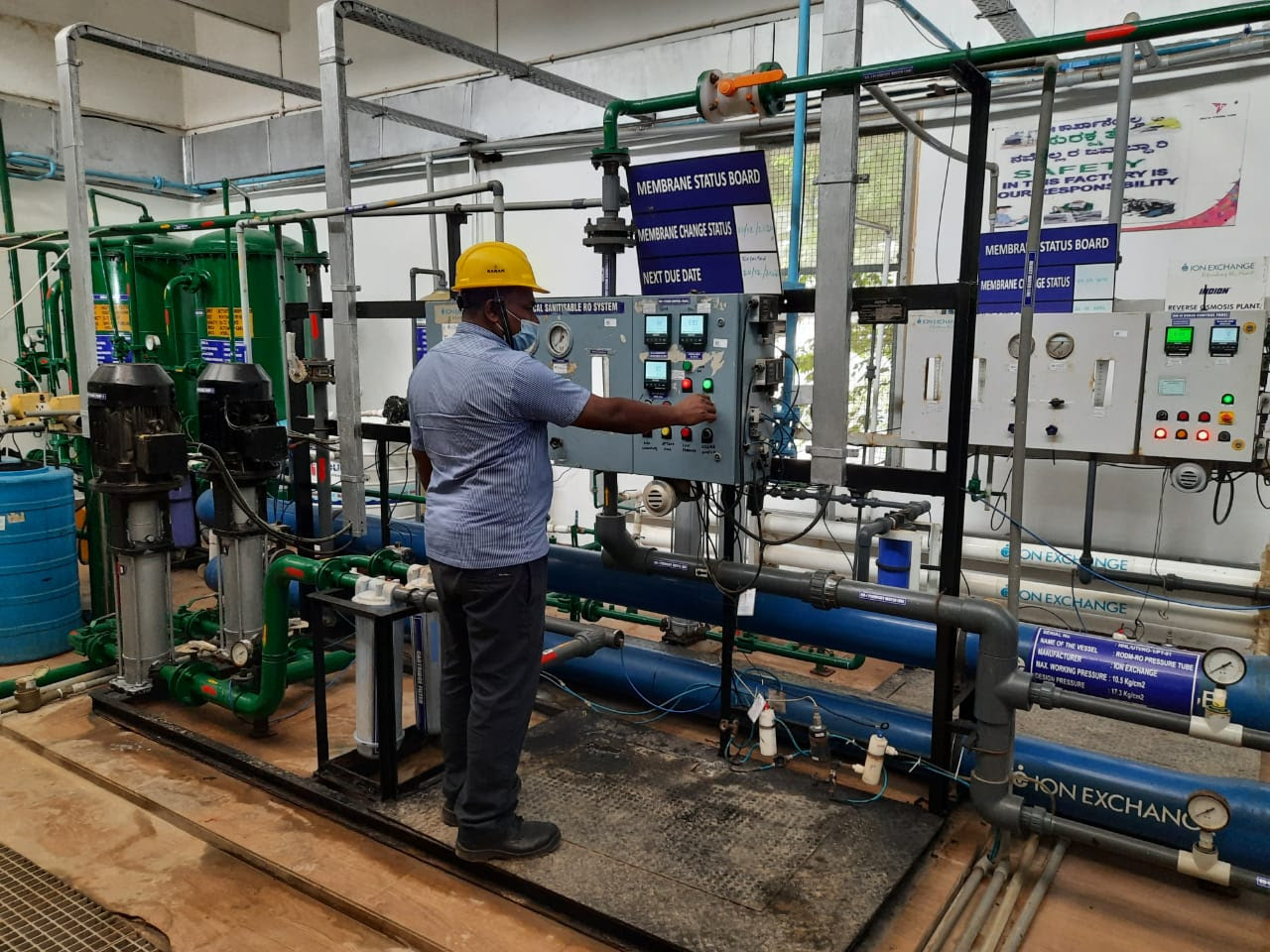Reverse osmosis plants operating for municipal and industrial projects and producing in large volumes can run without any such operational issues. If there are operational problems, it can impact the system’s capacity to perform. Routine maintenance can reduce the chance of foul risks and their consequences.
Try to follow suitable guidelines that can result in economic benefits and boost a plant’s lifespan. So, timely RO plant maintenance following the correct steps can optimise its operations effectively.
How Can Timely Monitoring Ensure Optimal Performance of RO System?
Having a good RO plant design is important. But it is also possible to prevent system failure by doing close and timely monitoring. The major factors that impact the performance of the membrane are:
- Checking the condition of raw water
- Pretreatment process
- Check the parameters contributing to system operations
- Degree of plant maintenance and need for continuous monitoring
- Functioning of plant operators and response to performance changes
- Rate of fouling
It is important to check the data for better monitoring, and the key parameters to check are output, pH level, temperature, pressure drop level, conductivity, and others. It can optimise the performance of the RO system and help it provide accurate results for water purification.
Maintaining pre-treatment equipment can optimise the performance of the cleaning system. The following steps can ensure it is better:
1. The time to wash the carbon filter and sand filter in the pre-treatment stage depends on the raw water. When using tap water, it will take a week to clean the filters. However, when using groundwater, well, or river water, it will only take 3 days. The process ensures that the particles or impurities that submits on the pre-treatment device can wash away easily
2. Check the quality of the water that goes into the reverse osmosis device. Also, check the pressure between the inlet and outlet machine. The need for replacement of the filter depends on the quality of the inlet water.
Try not to expose the rein tank to the sun for its optimal performance.
Benefits of Plant Monitoring
Is it possible that a pretreatment system fails when running a RO plant? Failures are sudden, so monitor the process and the design features that can minimise the risks. The factors that can contribute to plant failure are:
- Poor choice of cartridge filter
- Overdosing of pretreatment flocculants
- Chlorine level in water
- Poor quality of scale
- High iron or chance of organic loading
- High level of microbes
- Presence of carbon fines
If you want to prevent filter membrane fouling, make sure to prevent the above situations timely. It can eventually impact the performance of an RO plant.
Timely and correct inspection of the pipeline dosing the cartridge filters and tanks can address the chance of biofilm slime and prevent microbiological growth in the water. The cleaning requirement applies to individual plants.
Upkeep of Osmosis System For Best Water Purification
If you maintain the RO system, it will positively affect the quality of water that results from the purification system. It needs the following precautions to show the ultimate results.
It is crucial to check the operational parameters of all RO devices. Try to record it every 2 hours to keep track of its performance. Clean the RO system membrane to remove the sediments on its surface and ensure the quality of the membrane’s permeability.
Keep a check on the conductivity meter, the pressure gauge, and other parts of the RO system. The seawater pump, along with the high-pressure pump, is also vital to check. Replace the lubricating oil as per timely maintenance.
Maintain System During Downtime to Boost its Lifespan
The periods of inactivity are crucial, and correct maintenance during this time can boost an RO system’s lifespan. In case of longer downtime, use formaldehyde solution in the membrane module. Close the valves to check and avoid Mold in them. Here, the formaldehyde solution can work as a reagent to treat the freshwater present in the osmosis device.
When using a composite membrane with downtime of more than one week, try to immerse the membrane in NaHSO3 with 1% concentration. It can prevent bacterial growth on the membrane’s surface.
Therefore, it is important to maintain the purification system. By following the correct steps, the purification system can achieve a high-efficiency level with lower costs.
Important Things To Monitor in a RO System
Monitoring the major parameters such as connectivity, flow, and pressure can optimise its functions. The condition of the membrane and its performance level depend on the system design. The inspection and data collection step are crucial, and the monitoring program should include the following:
- Verify and improve permeate quality to check conductivity and presence of chloride
- Adjusting the main operation, such as differential pressure, recovery, flowrate, permeate flux, and pH level
- Thorough checking of the membrane’s condition by performing the following steps:
- Check the design and performance of the membrane
- Check the lab samples
- Evaluate the field surveys
- Check vessels like O-rings, adaptors, connectors
- Check for repairing or replacement of membrane
- Test individual membranes and check each of their durability to ensure optimal performance
So, with the suitable idea of maintaining an RO plant, try to get it from a reputable manufacturer. RO Care India has an array of premium plants from top brands. Come to us with your requirements and industrial uses, and we will try to provide the best RO plant system. Our specialists can help maintain the RO plant to ensure its best performance to provide clean water.









